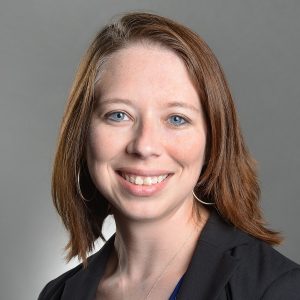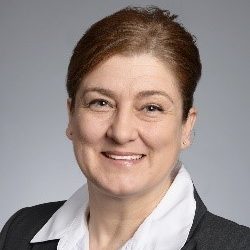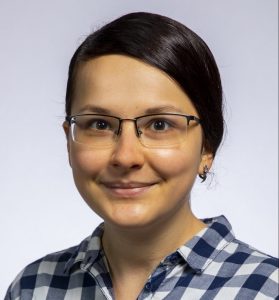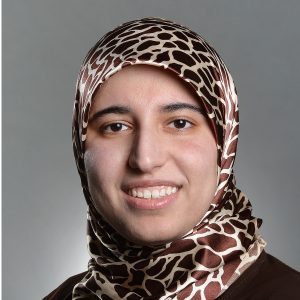
Nov. 3, 2020
What to Learn and What to Avoid from ClinicalTrials.gov for New Trial Design When Repurposing Drugs for Precision Medicine?
Clinical trials are essential in the process of new drug development and repositioning. As clinical trials involve significant investments of time and money, it is crucial for trial designers to carefully investigate trial settings prior to launching it. In the 356,282 trials registered on ClinicalTrials.gov , one can search similar trial setting with the current trial of interest and identify prior or ongoing trials that share similar patient’s population, genetic characteristics, intervention means, etc. It is a wise strategy to learn from successful trials and to avoid repeating mistakes from failed trials. For example, in our computational drug repositioning project…

Nov. 3, 2020
A Case-Control based Genomic Analysis of Chronic Obstructive Pulmonary Disease
Chronic Obstructive Pulmonary Disease (COPD) is a respiratory illness that affects millions of people all over the world. It is a major cause of chronic morbidity and mortality and a serious global public health problem. COPD is the fourth leading cause of death worldwide. Although the environmental causes of COPD which predominantly include cigarette smoking are well-documented, to this date the genetic underpinnings of COPD remain largely unknown. Furthermore, in the current landscape of a respiratory pandemic, COPD patients are at a much higher risk for developing other respiratory illnesses and co-morbidities. In this study we use genomic data from…

Oct. 23, 2020
Risk Factors for Thyroid Cancer, a Systematic Review
Thyroid cancer accounted for 1 out of every 20 female cancer diagnoses worldwide in 2018; the etiology of this disease is not well understood, and preventive programs are not established. It is well known that thyroid cancer incidence has been increasing since the 1980s, largely attributed to the increase in diagnosis of papillary thyroid cancer and improvements in detection and diagnosis. Currently, exposure to ionizing radiation is the only well-established risk factor for thyroid cancer. Literature published in the English language between 1946 and September 2020 was searched via MEDLINE. A building-block strategy was used to identify articles of interest: “thyroid neoplasms”…

Oct. 23, 2020
FatPlants: A Comprehensive Website Platform of Plant Fat Related Genes, Proteins and Metabolism
Increasing seed oil content by plant breeding has resulted in trade-offs or penalties with respect to protein content, seed size, or seed set. The molecular basis for this impasse is mostly speculative. Use of current global profiling approaches to better understand both the metabolic consequences of higher oil and the basis for reduced yield must also deal with off-target genetic mutations (even in near-isogenic lines), ultimately confounding cause-effect interpretations. We propose a diverse, integrated strategy to study the consequences of higher lipid production by studying transgenic plants specifically engineered to produce higher seed oil. As a part of this collaborative project,…

Oct. 20, 2020
Cancer Surveillance Informatics – Missouri Cancer Registry and Research Center
Cancer surveillance has to be able to monitor trends of cancer cases, subtypes of cancer, and cancer clusters to inform cancer control and policies related to cancer and cancer care. The increasing complexity and depth of cancer care, treatment, and other elements to describe a cancer case require cancer registries to capture data from a wide variety of sources by utilizing many informatics methods to integrate these data. Current and future developments include automated processing of electronic pathology reports, artificial intelligence, natural language processing NLP, and linkage of data sources to expand surveillance goals. Recent developments include a national virtual…

Oct. 14, 2020
Development of A Blockchain Framework for Virtual Clinical Trials
Clinical trials are essential for discovering new treatments, but there are multiple challenges to patient recruitment, patient engagement, and cost containment. Virtual clinical trials (VCT) are an innovative approach that provides potential solutions by conducting home-based, rather than site-based, clinical trials. Virtual clinical trials are still the exception rather than general practice due to technical barriers. “Blockchain,” a distributed ledger technology, is a perfect match for virtual clinical trials. Its peer-to-peer design, security settings, and data transparency meet the needs of many healthcare applications. The programmable “Smart Contract” feature makes blockchain more suitable and feasible for VCT by solving computational…

Oct. 14, 2020
Identifying Patient-specific Flow of Signal Transduction Perturbed by Multiple Single-nucleotide Alterations
Background: Identifying patient-specific flow of signal transduction perturbed by multiple single-nucleotide alterations is critical for improving patient outcomes in cancer cases. However, accurate estimation of mutational effects at the pathway level for such patients remains an open problem. While probabilistic pathway topology methods are gaining interest among the scientific community, the overwhelming majority do not account for network perturbation effects from multiple single-nucleotide alterations. Methods: Here we present an improvement of the Mutational Forks formalism to infer the patient-specific flow of signal transduction based on multiple single-nucleotide alterations, including non-synonymous and synonymous mutations. The lung adenocarcinoma and skin cutaneous melanoma datasets from…

Oct. 2, 2020
Analysis of Healthy Coping Feedback Messages from Diabetes Mobile Apps
To analyze Healthy Coping-related feedback messages from diabetes mobile apps against the theoretical framework based on behavioral change theories. We searched apps using the search terms: “diabetes,” “blood sugar,” “glucose,” and “mood” from iTunes and Google Play stores. We entered a range of values on three Healthy Coping domains: 1) diabetes-related measures, 2) physical exercise/activity, and 3) mood to generate feedback messages. We developed behavioral change theory-based framework and analyzed the feedback messages against three dimensions of timing, intention, and content (feedback purpose and feedback response). The feedback purposes were categorized into seven purposes; warning, suggestion, self-monitoring, acknowledging, reinforcement, goal…

Oct. 2, 2020
Data-Driven Patients Stratification and Drug Repositioning
Cancer is a heterogeneous disease and represents a great example of the need for selecting patient-centric rather than disease-centric treatment. De novo drug discovery is a time-consuming and high-cost process with a low success rate. Drug repositioning (DR) reduces the time, cost, and risk of developing new drugs because it recommends new uses for drugs already declared safe for human use. This study uses a novel data mining approach, exploratory data mining (EDM), and network analysis for patient cohort stratification and DR. This approach enables identifying homogeneous subgroups within a heterogeneous disease population and recommends drugs based on subgroup-specific molecular…